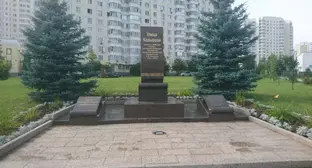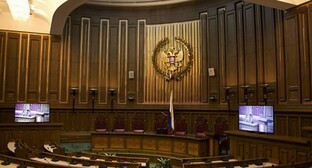22 May 2003, 13:24
Ando-tsez peoples
Ando-tsez, Ando-didoi peoples are groups of peoples of the Russian Federation, the aboriginal population of the western Dagestan. Two groups - And and Tsez are related to the Avars, and they considered themselves the Avars during the census of 1970 and 1979. The And group includes Ands (they call themselves Kvanal, Kwannal), Botlikhs (buihadi), Godoberin (Gibdidi), Bagulals (Bagulal), Chamalals (Chaalali), Tindals (Idari, Ideri), Karatins (Kirdi), Akhvakhs (Ashvado); Tsez group consists of Didois (Tseza), Khvarshins (Khuani, Khvarshal), Bezhtins (Beshitl, Georgian name - Capuchins, Avar name - Khvanal), Gunzebs (Khunzalis) and Ginukhs. According to the data of 1992 their total population is about 55-60 thousand people.
They belong to the Balkan-Caucasus race of the big European race. The languages are of the And and Tsez subgroups of the Nakh-Dagestan group of the North Caucasus family; many are divided into the dialects. Avar and Russian languages are also widely spread. The believers are Moslems-sunnits.
Traditionally they mainly live in the mountainous districts of the western Dagestan. The main traditional occupations of the Tsez peoples are cattle-breeding, of And peoples - agriculture and cattle-breeding (Botlikhs have gardening). Part of them moved to the plain (modern Khasavjurt, Kiziljurt districts etc.), where they do the vine-growing. Traditional trades are making the burkas (fur cloaks) (the Ands), thin cloths (Karatins), making knitted woolen footwear (Bezhtins, Didois, Bagulals).
Traditional dwelling is made of stone and has local peculiarities. For example, the Bagulals, Tindals and Botlikhs have two-floor houses, the rest mainly have one-floor houses with a yard). Traditional clothing is of a general Dagestan type. Women?s head gears are very special (Botlikh chukhta with ?horns?, chukhta of Bagulals and Tindals with two pairs of silver temple rings, And chukhta of semicircular shape with a cap filled with wool etc.).
There takes place the process of consolidation of the Ando-Tsez peoples with the Avars, the local differences in the household and culture tend to disappear. Folklore retains (songs and fairy-tales).




